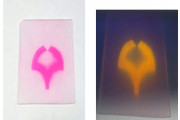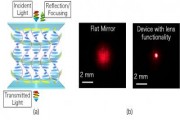 2024-11-21
2024-11-21
Fabrication process. (a) Formation of p-electrodes and etching masks. (b) Formation of active and slotted channels. (c) SEM image of slotted channel. (d) Deposition of insulator layer and photoresist opening. (e) Insulator layer opening. (f) Metallization and facet coating. Credit: Applied Physics Express (2024).
In a new study, researchers at Osaka University have created the world's first compact, tunable-wavelength blue semiconductor laser, a significant advancement for far-ultraviolet light technology with promising applications in sterilization and disinfection.
...
Continue reading →
 2019-06-14
2019-06-14
Using LED as a light source, researchers at Osaka University have now developed a convenient light-driven process for oxidizing polypropylene (PP) without harmful waste.
The research team used radicals to make the plastic react. Scholars chose an LED lamp as the light source photo-chemically activate radicals for breaking down the chemical bonds which make plastic unreactive and hard to decompose.
"In applications like printing and medical materials, plastics must be surface-modified," explained Tsuyoshi Inoue, co-author of the study. "Oxidizing C-H bo...
Continue reading →
 2016-06-21
2016-06-21
Researchers at Osaka University developed a technology to control the light wavefront reflected from a cholesteric liquid crystal - a liquid crystal phase with a helical structure. Although known for their ability to Bragg-reflect light, cholesteric liquid crystals could only be used as flat mirrors, reflecting light at the same angle as the incident angle. The new technology enables planar optical components to be made with functionality by design, contributing to the miniaturization of catoptrics devices.
Continue reading →
 2024-11-21
2024-11-21
 2019-06-14
2019-06-14
 2016-06-21
2016-06-21